Explore Alabama's most incredible abandoned buildings
Capturing the derelict heart of the Cotton State
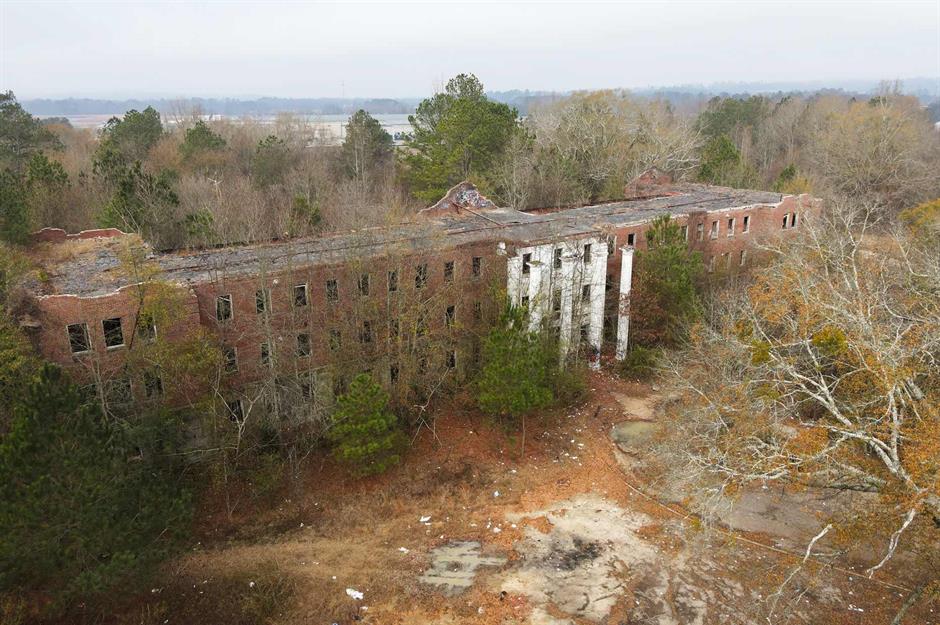
When it comes to documenting the fascinating forgotten buildings across America's Deep South, photographer Leland Kent is something of an expert. Preserving the past through his incredible images, his work shines a light on the region's tumbledown treasures.
Leland's book Abandoned Alabama: Exploring the Heart of Dixie tours the Cotton State's most incredible derelict structures, from hospitals to homes.
Click or scroll on to explore nine of Alabama's most curious crumbling buildings...
Moulthrop House
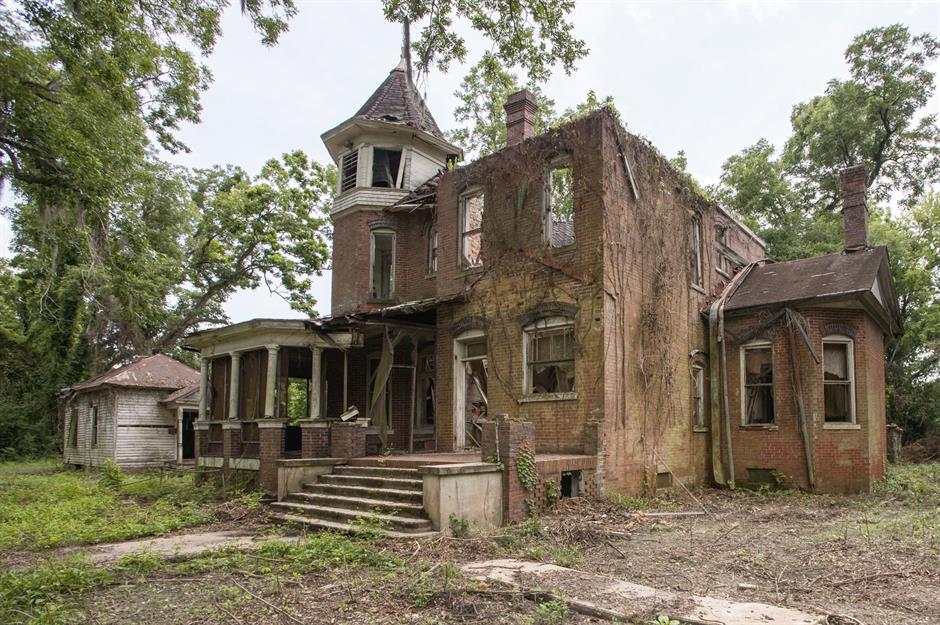
Leland Kent of Abandoned Southeast has stumbled upon more than his fair share of crumbling abandoned mansions. Among the highlights is this brick beauty that was built in 1899 for State Senator Robert H. Moulthrop, who is best remembered for penning Alabama's Equal Education Bill.
A hybrid of fancy Imperial Revival and Queen Anne styles, the turreted five-bedroom home is an absolute gem despite its tumbledown state.
Moulthrop House: exceptional construction
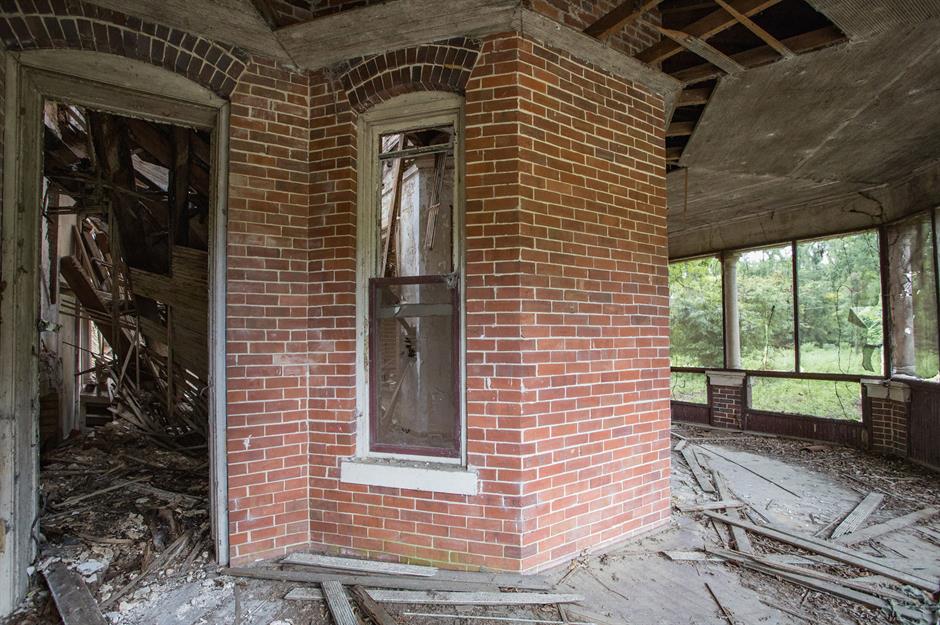
Together with his family, the senator owned the state's largest brick manufacturing plant, hence the exceptional quality of the external walls, which are six bricks-thick in places.
As you can see from this shot of the columned veranda, the brickwork is in good condition while the roof and other parts of the structure have pretty much collapsed.
Moulthrop House: dangerous state of disrepair
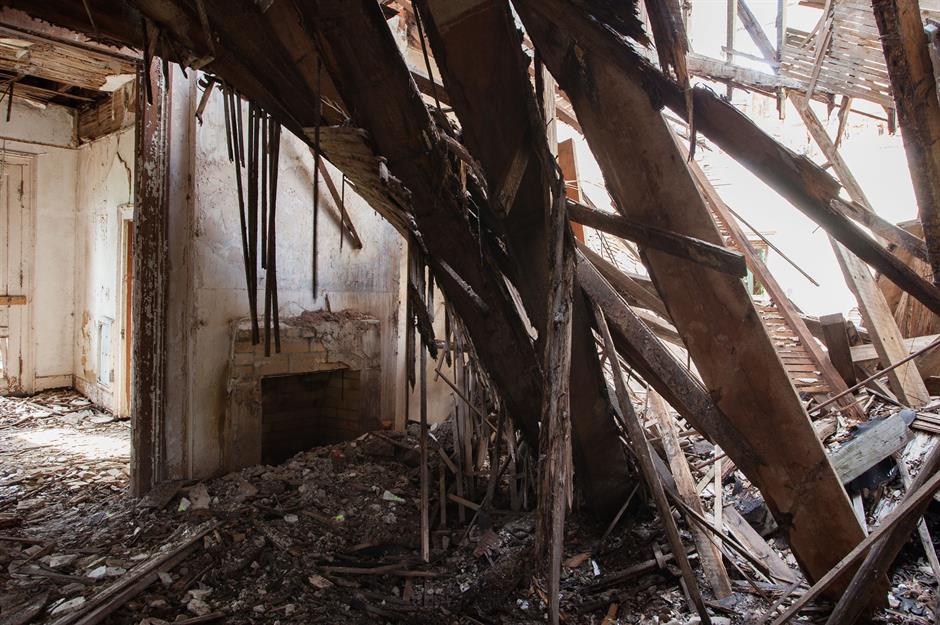
Exploring Moulthrop's interior isn't for the faint of heart. Swathes of the roof have come down in the parlour, while the rest looks like it could cave in at any moment.
Piles of debris litter the floor and what was no doubt once an attractive fireplace is now nothing more than a disintegrating hole in the wall.
Moulthrop House: crumbling time-warp
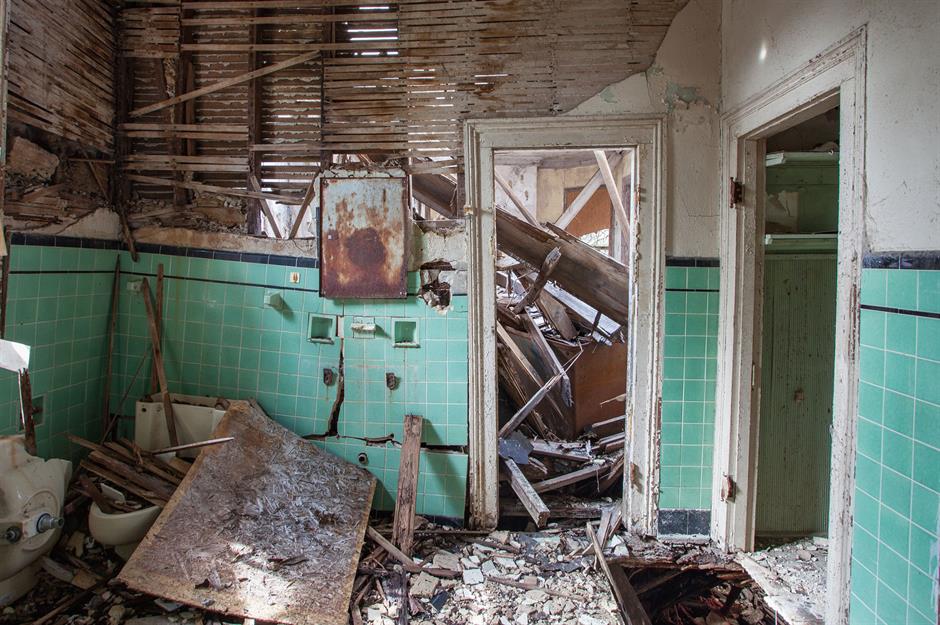
The bathroom may still have most of its tiles, but the wall has buckled in parts – the manse's interior walls aren't made of robust brick like the external ones – and it too is swamped with debris. There's even what appears to be a huge hole in the floor.
The once-grand estate stayed in the Moulthrop family until the 1980s when it was sold to a developer who let it go to rot.
Moulthrop House: hope on the horizon
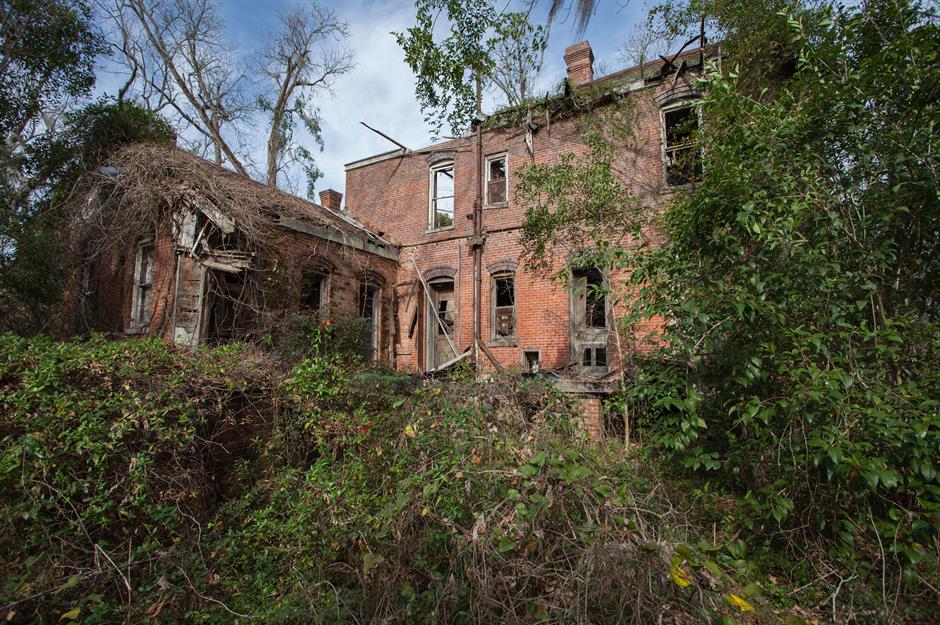
Fortunately, the future looks bright for the Victorian pile. In June 2020, the mansion and its grounds were snapped up by an LLC Group that includes descendants of Senator Moulthrop and the property is now undergoing an extensive renovation.
The project was slated to be completed by Thanksgiving 2021, but the project presumably stalled due to the pandemic and it's unclear whether work has begun.
The McDonald House
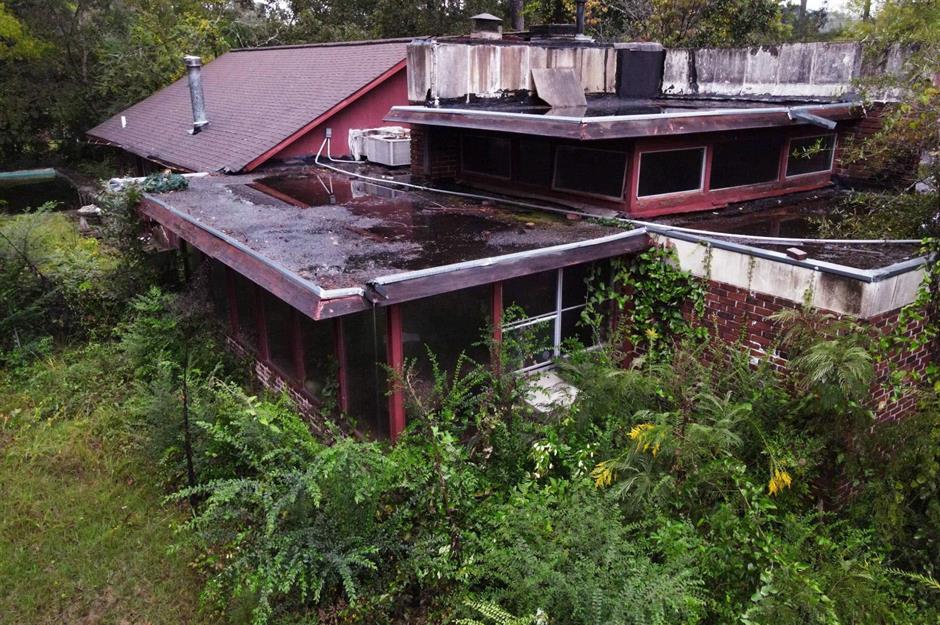
This mid-century masterpiece in Birmingham was designed in 1960 by the influential John Randal McDonald. The colourful character described himself as “an architect with a capital A” and the “poor man's Wright” since his work resembles that of Frank Lloyd Wright but was considerably more accessible.
Despite this, McDonald went on to create homes for a roster of famous names, including Bjorn Borg, Perry Como, James Garner and Maureen O'Hara.
The McDonald House: a mid-century masterpiece
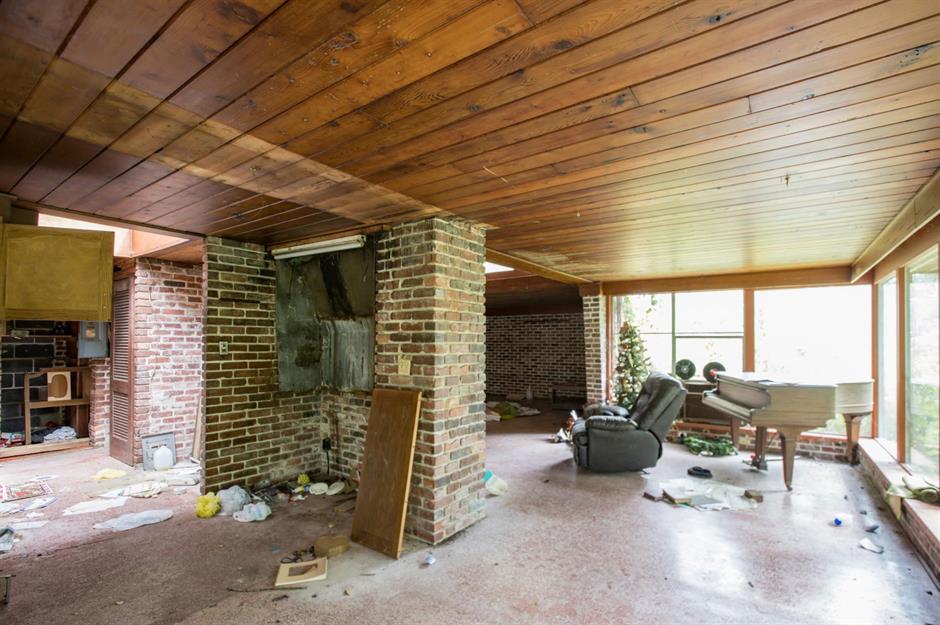
The only example of McDonald's work in Alabama, the two-bedroom house epitomises his oeuvre, which is characterised by simplicity, affordability and the use of natural materials. The open-concept living area for instance features a hardwood ceiling, exposed brickwork and terrazzo flooring, which lend the space an organic feel, while floor-to-ceiling windows bring the outside in.
Note the random grand piano and Christmas tree, no doubt left over from a cheerier time.
The McDonald House: preserved period features
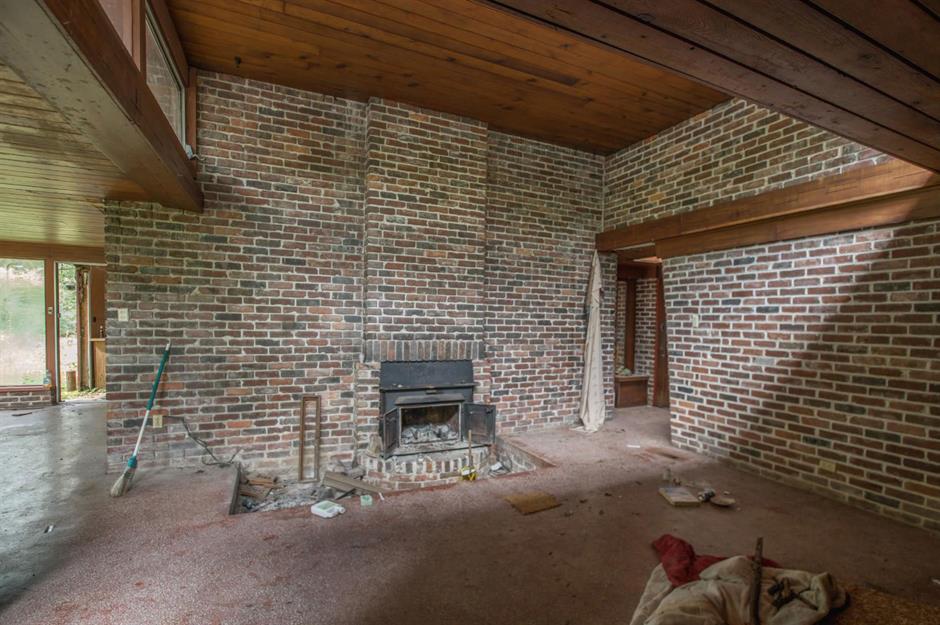
Abandoned after its original owner passed away, the 1,500-square-foot (139 sqm) property had been unoccupied for many years when Kent paid it a visit.
As you can see, the house was in a bedraggled state but its key features had survived, including the living area's sunken hearth fireplace.
The McDonald House: overgrown grounds
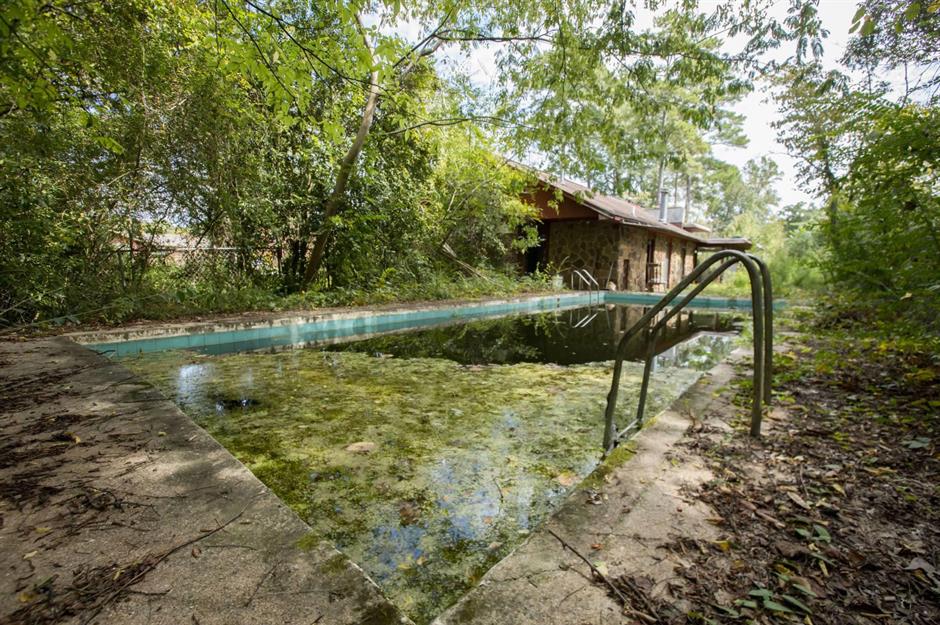
The galley kitchen had been almost stripped bare but the master bedroom was better equipped with its wardrobe and even the decorative headboard and mirrors still in place.
Moving outside, the in-ground pool was filled with dank, filthy water that would have provided the perfect habitat for mosquitoes, alligators and other creatures over the years.
The McDonald House: revived and restored
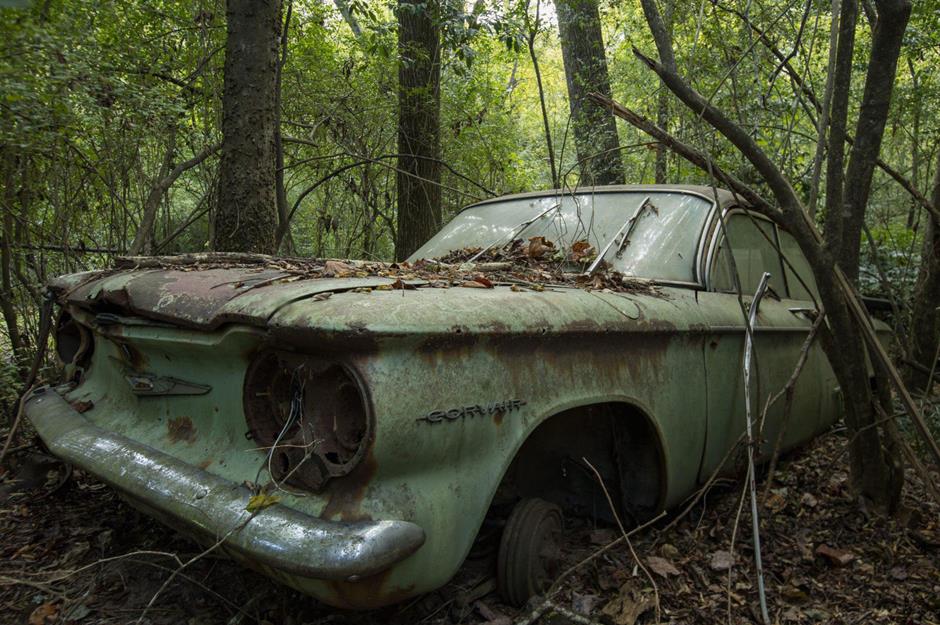
There was also a 1960s Chevrolet Corvair rusting over in the backyard. Fast-forward to the present day and the architecturally important house has been fully restored.
The property was purchased by a group of investors last year, who didn't waste any time fixing it up and putting it on the market for $225,000 (£175k). On the grounds, the pool was filled in and laid to lawn, but the whereabouts of the Chevy are sadly unknown.
The Jemison Center
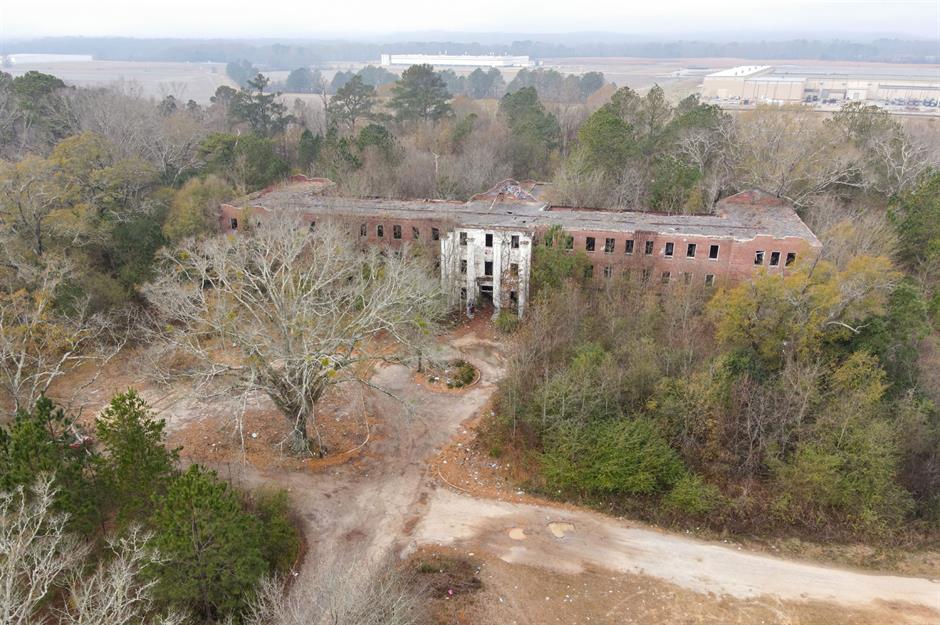
Alabama has a troubled history of racial injustice – even the nickname Dixie is problematic with its connotations of slavery and the oppression of the Black community.
This is reflected in many of the state's abandoned buildings, including the Alabama State Hospital for the Insane's infamous Jemison Center in Tuscaloosa, which is now a derelict shell following years of neglect and vandalism. A hotbed of paranormal activity, it's said to be the most haunted place for miles around.
The Jemison Center: sinister past
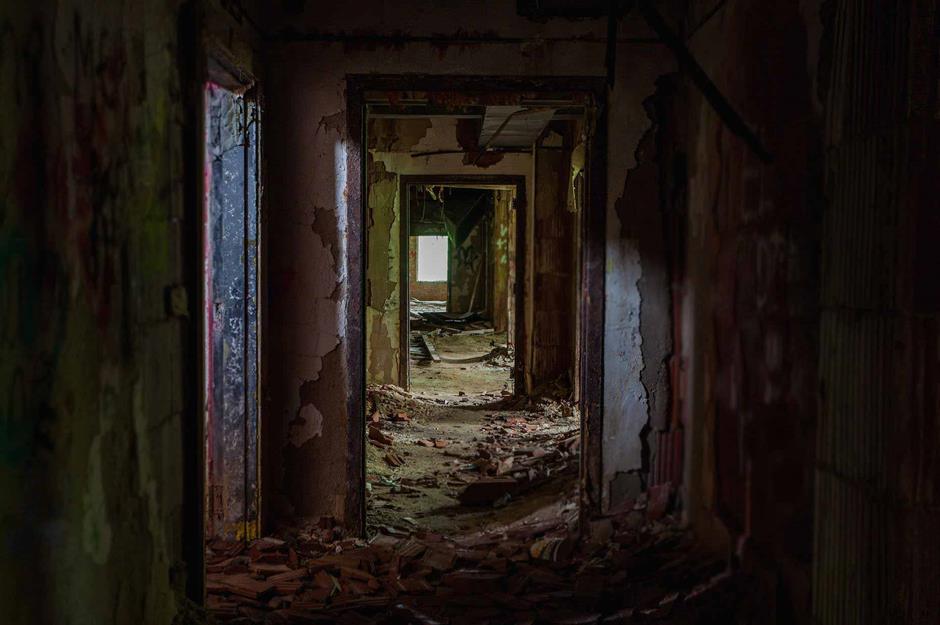
Named after a Confederate senator and owner of enslaved people on whose former land the facility was built, the foreboding asylum was established in 1939 during the segregation era to treat African American patients with mental health issues.
In reality, the hospital operated as a forced labour camp, where rather than being cared for, those unlucky enough to end up there were more or less enslaved.
The Jemison Center: exploitative practices
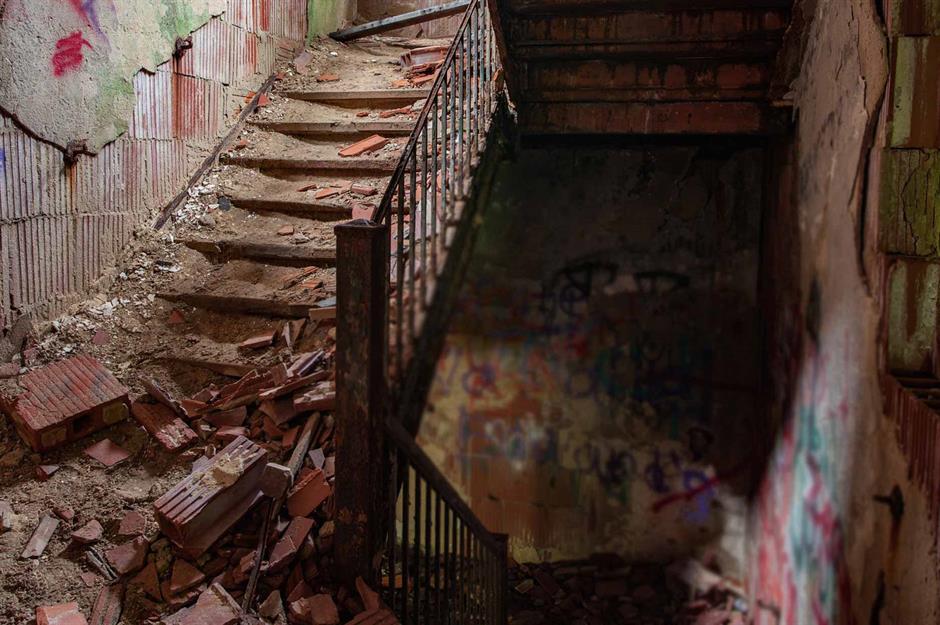
Patients were expected to work on the plantation surrounding the hospital, tending crops in the fields to pay their way and support the underfunded facility.
The policy, which the doctors euphemistically called “occupational therapy”, attracted controversy in the 1960s as the public became increasingly concerned the hospital was prolonging patients' stays to exploit them for their labour.
The Jemison Center: abhorrent conditions

The furore came to a head in 1970 when a journalist from the local newspaper visited the institution and reported on the appalling conditions patients were having to endure. Many lacked beds and 131 male patients were found to be sharing just one shower.
The Jemison Center: game-changing court judgement
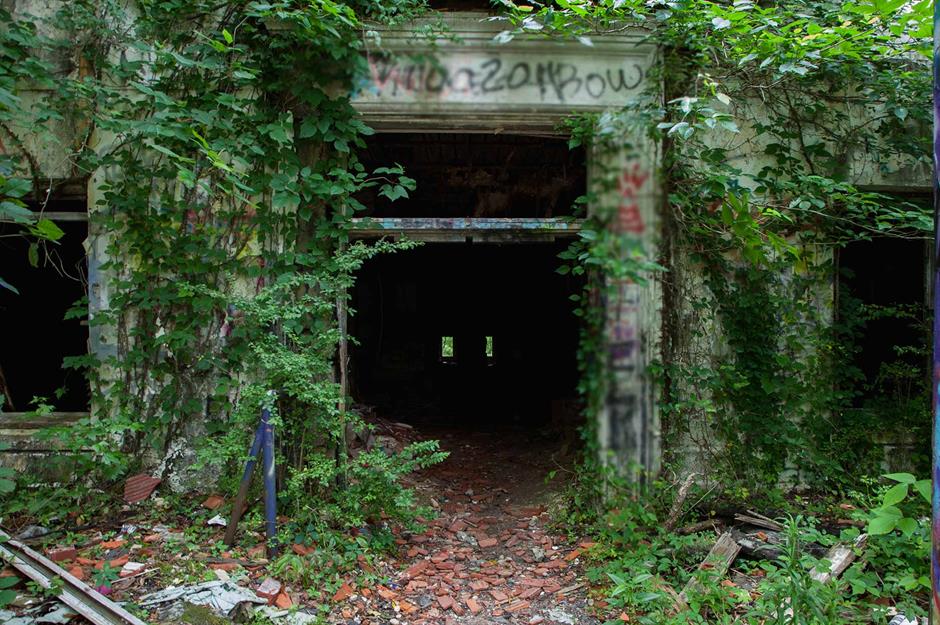
At the time, a lawsuit had been filed against the equally scandalous Bryce Hospital and in 1971 it was widened to include the Jemison Center.
The resulting landmark judgement set minimum standards for the care of people with mental illnesses and led to the long overdue closure of the facility in 1977. A painful reminder of Alabama's racist past, it has lain empty ever since.
The Outlaw House
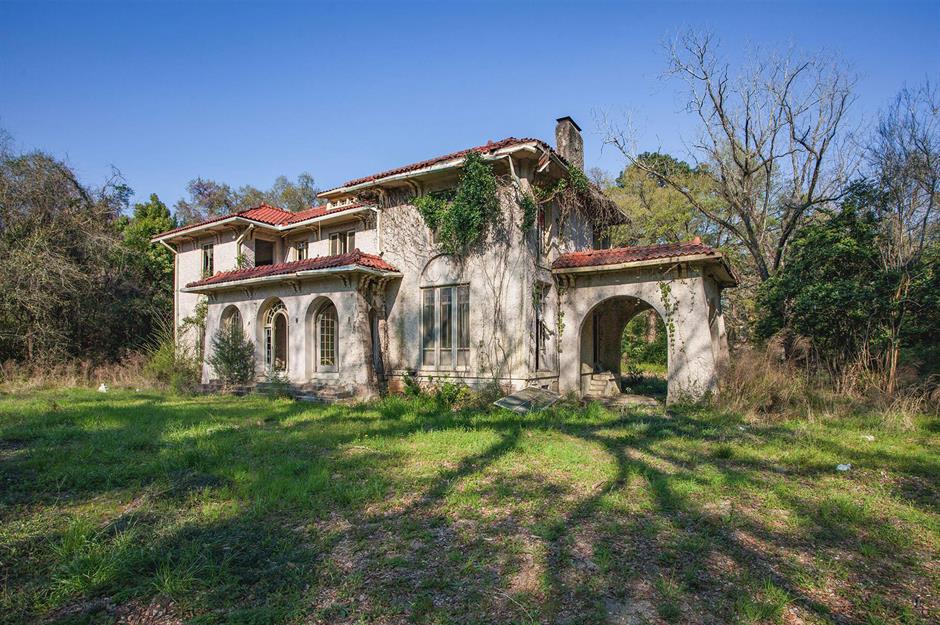
The Outlaw House in rural Mobile County was designed by celebrated architect George Bigelow Rogers and completed in 1914.
Not just any old house, the elegant manse was considered one of the finest examples of Spanish Colonial Revival architecture in Alabama and ranks among the grandest period homes built in the state in the 20th century.
The Outlaw House: tumbledown treasure

When Kent visited in 2019, the house had definitely seen better days. The window panes were cracked or missing entirely, paint was peeling off the walls and ceilings and the floors were strewn with detritus.
However, despite its woeful state, the mansion was still beautiful and looked like it wouldn't have been too much of a challenge to fix up.
The Outlaw House: owned by an FBI agent
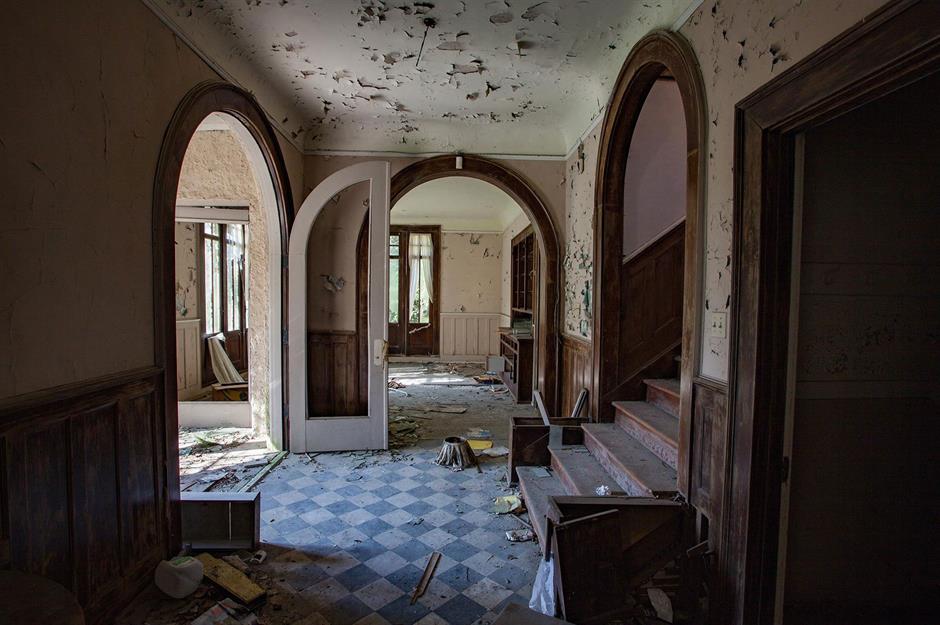
This is even more evident in the hallway, which had retained plenty of original features. Given its name, you'd be forgiven for thinking the house was a fugitive's lair, but the reality is quite the opposite.
The home was named after its most notable resident, George Outlaw, who was ironically an erstwhile FBI agent tasked with investigating the Ku Klux Klan, as well as a lawyer and hotshot businessman.
The Outlaw House: won in a poker game
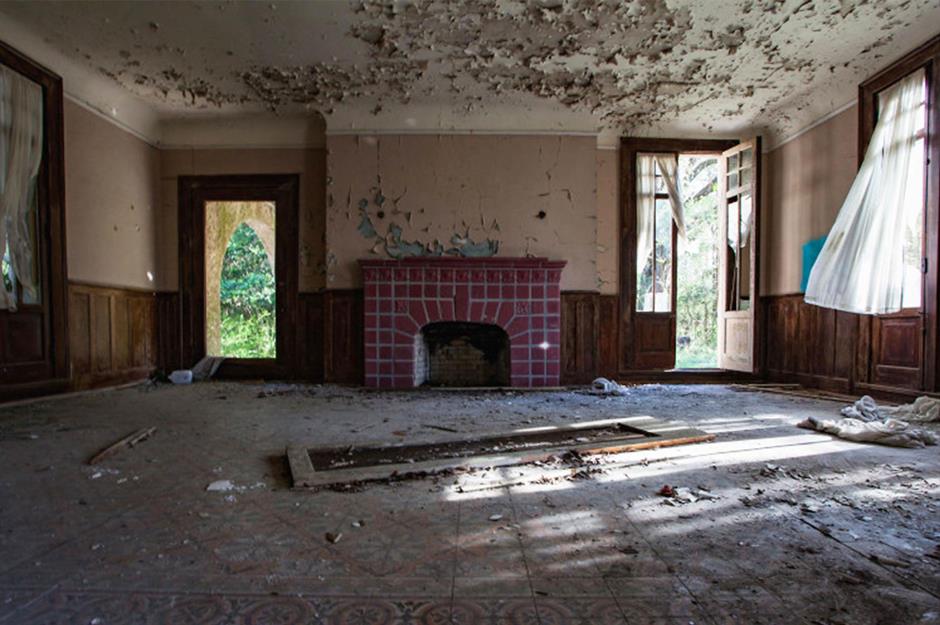
Outlaw acquired the property in 1925, purportedly after winning it in a poker game. Ingeniously, he went on to build a dam across a spring on the 120 acres of grounds (48.5 ha), which created a lake and provided the manse with electricity.
In fact, the Outlaw House was the first in the area to have electricity and a telephone, and it's even said to have had a secret tunnel. Outlaw could certainly afford the latest mod cons, having co-founded the popular Morrison's Cafeteria chain.
The Outlaw House: tragically demolished
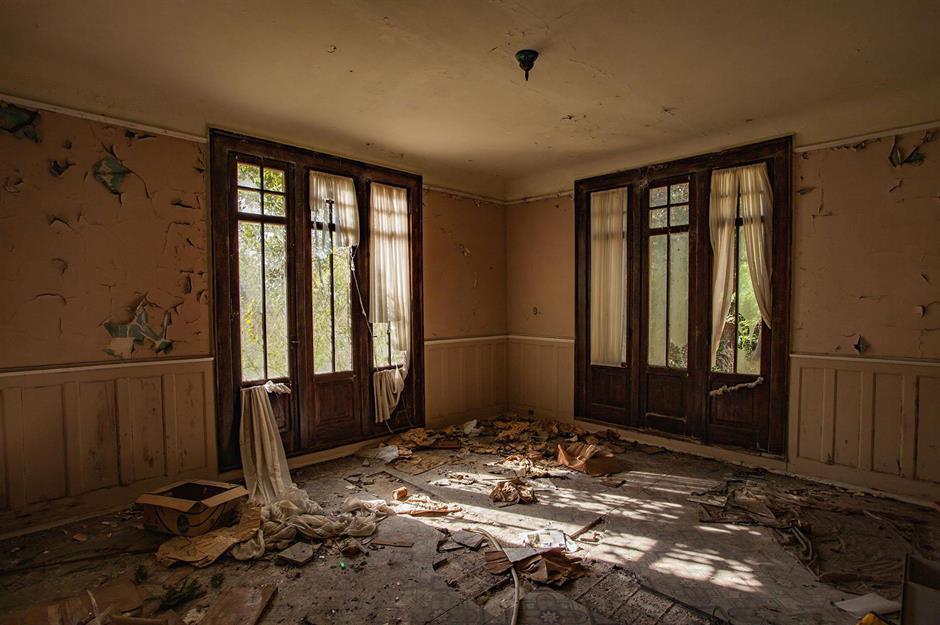
The house passed to Outlaw's youngest son Arthur, who lived there until the mid-1980s when, as the serving mayor of Mobile, he was obliged to move within the city limits. The Outlaw family continued to own the property but it was left to crumble.
Sadly, disaster struck in July 2021 when the house was gutted by a devastating fire that is yet to be explained and its charred remains were demolished just five months later.
The Craftsman House
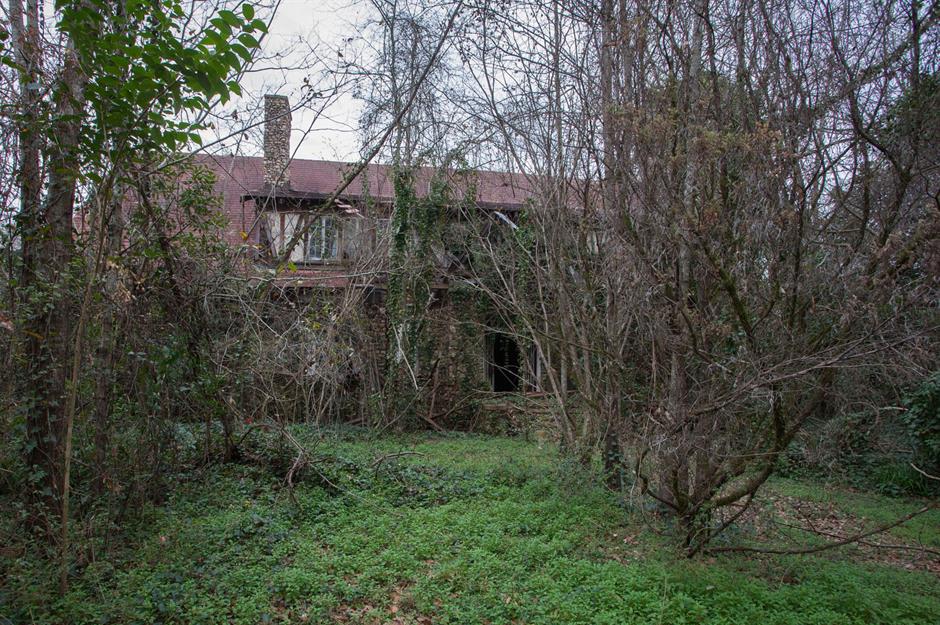
Located on the site of a former plantation, this now-overgrown house was built in 1915 by an Atlanta-based architect for a wealthy Alabama family.
A captivating example of the American Craftsman style, the rustic property was designed to blend in with the landscape, so it's rather fitting that nature is reclaiming it.
The Craftsman House: an architectural gem
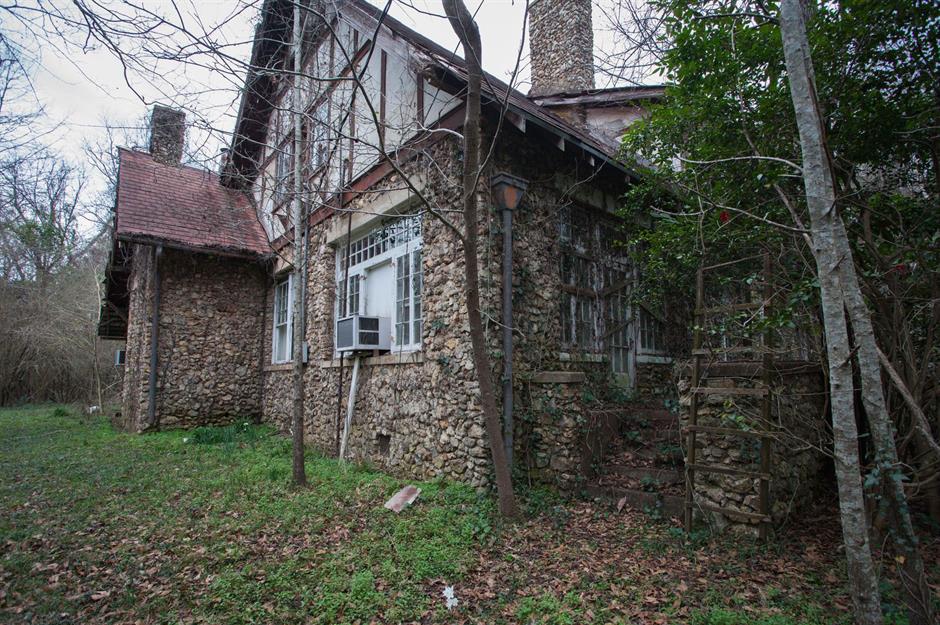
The façade is typical of the Arts and Crafts movement, incorporating stonework and timber details, along with features such as wide overhanging eaves and lattice windows, which work in perfect harmony with the surroundings.
Unlike the other properties we've featured so far, the sturdily constructed house appears to be in great shape from the outside.
The Craftsman House: the envy of the neighbourhood
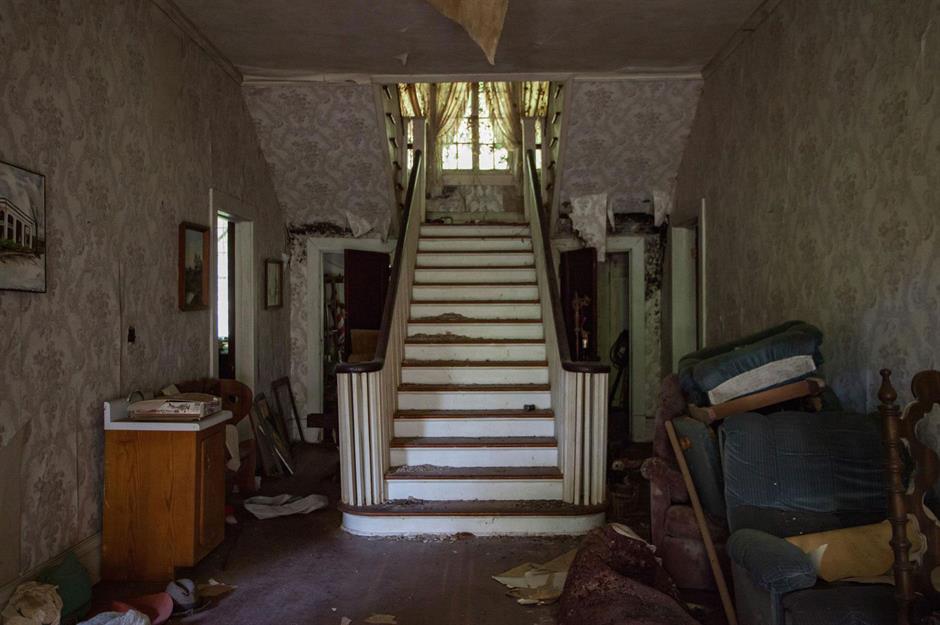
While awash with debris and personal belongings, the interior seems structurally sound, with much of the damage appearing to be purely cosmetic. Note the grand staircase. Along with the rest of the house, it was admired for its sophisticated design.
One of the neighbours purportedly even went as far as to rip out their existing staircase and replace it with a copy of this Craftsman masterpiece.
The Craftsman House: filled with exquisite furnishings

Attractive antiques abound, including in the dining room, which has some particularly handsome pieces.
It appears the house was passed down in the 1940s by the original owner to his daughter, who was described as the “epitome of a gracious Southern lady”. She remained in the property until her death in the 1990s at the age of 94.
The Craftsman House: changing fortunes?
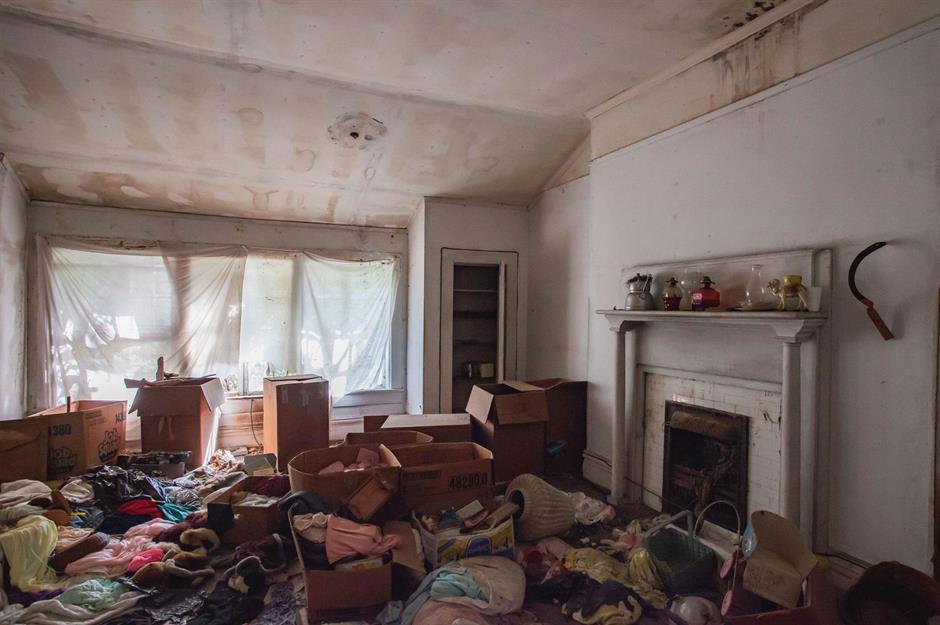
It's thought the house has sat vacant since then. In 2020, Kent reported that the property had been put on the market with an asking price of $500,000 (£390k) but the listing was later removed and it's unclear if the old home was ever sold.
Hopefully, a deep-pocketed buyer with a fondness for Arts and Crafts architecture has bagged it and is restoring the house to its former glory.
The Governor's House Hotel
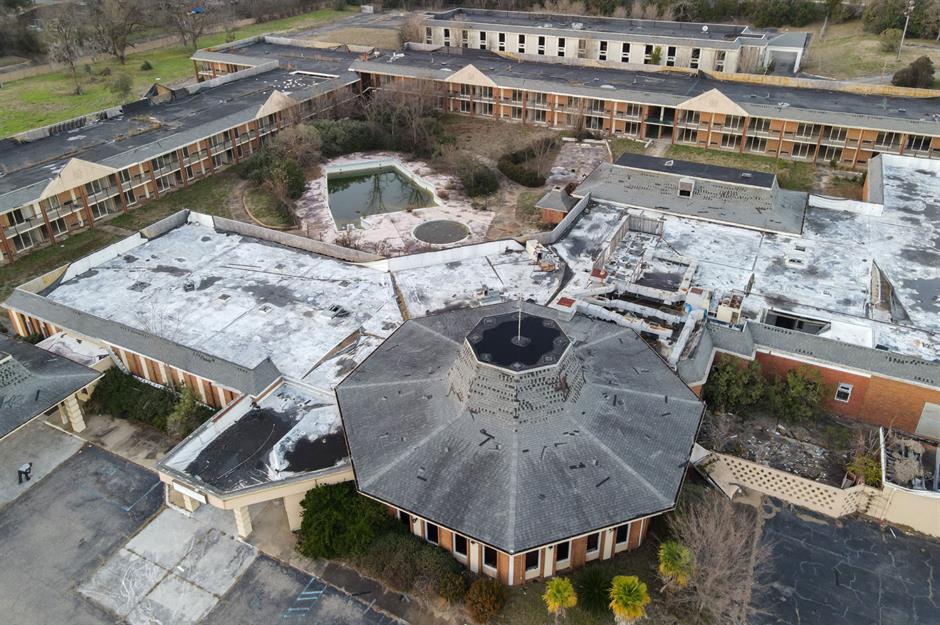
As well as exploring and photographing abandoned heritage buildings with heaps of architectural merit, Kent is partial to Alabama's discarded commercial buildings too, which can be just as interesting. Cue Montgomery's Governor's House Hotel, which was something of a local institution in its heyday...
The Governor's House Hotel: an Alabama landmark
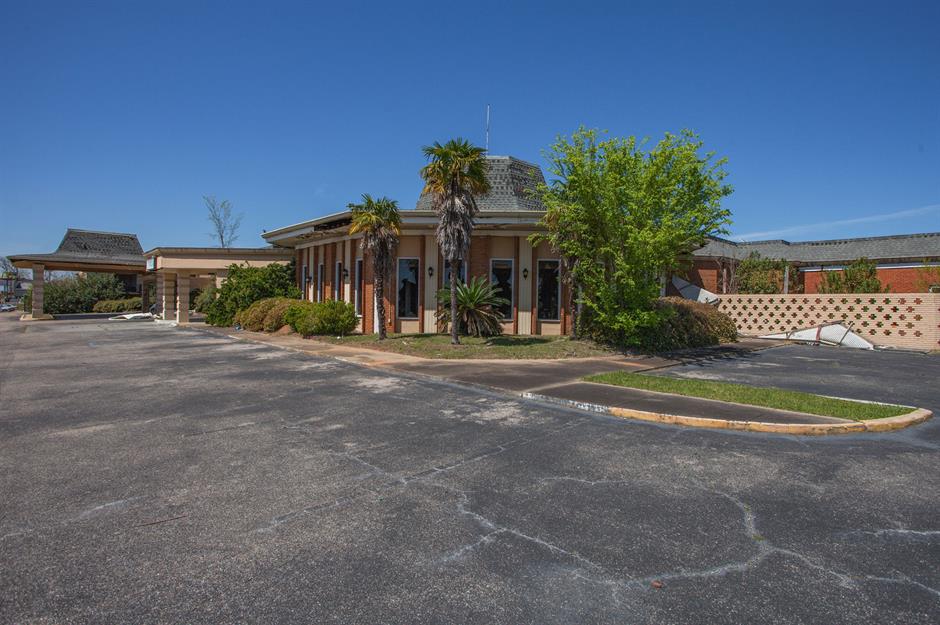
Built in the 1960s, it boasted 197 plush guest rooms and a whole host of luxurious amenities, from a cavernous banqueting hall to a golf course and the gourmet Rotunda Restaurant and Filibuster Lounge.
With so much to offer, the hotel quickly established itself as one of Alabama's top convention centres.
The Governor's House Hotel: VIP venue
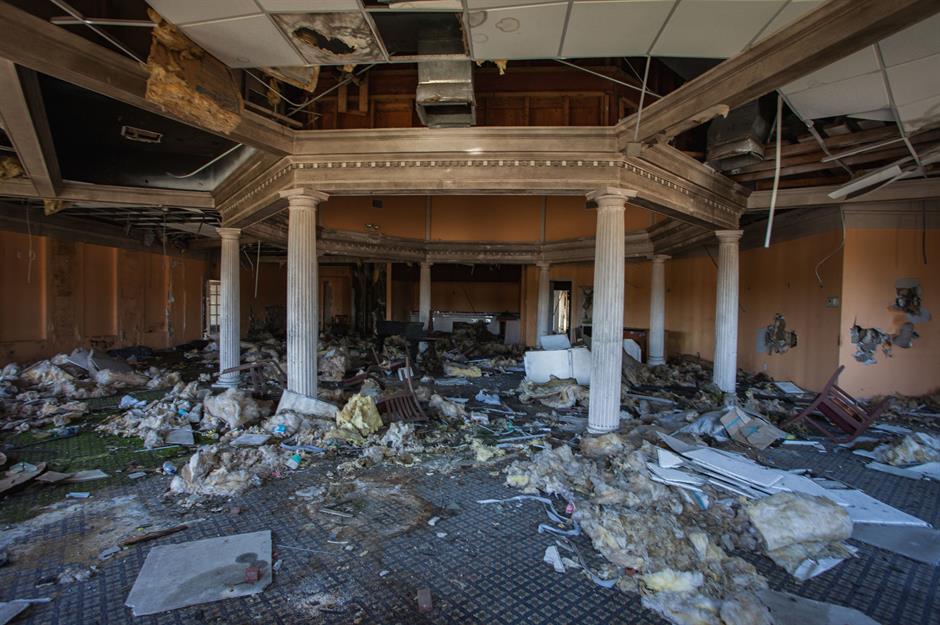
Now looking worse for wear, the circular restaurant and lounge hosted an impressive number of VIPs over the years.
Politicians regularly dined there – the hotel was also the most sought-after venue in town for election night parties – and the A-list Hollywood stars staying at the hotel would almost certainly have eaten in this room.
The Governor's House Hotel: celebrity guests
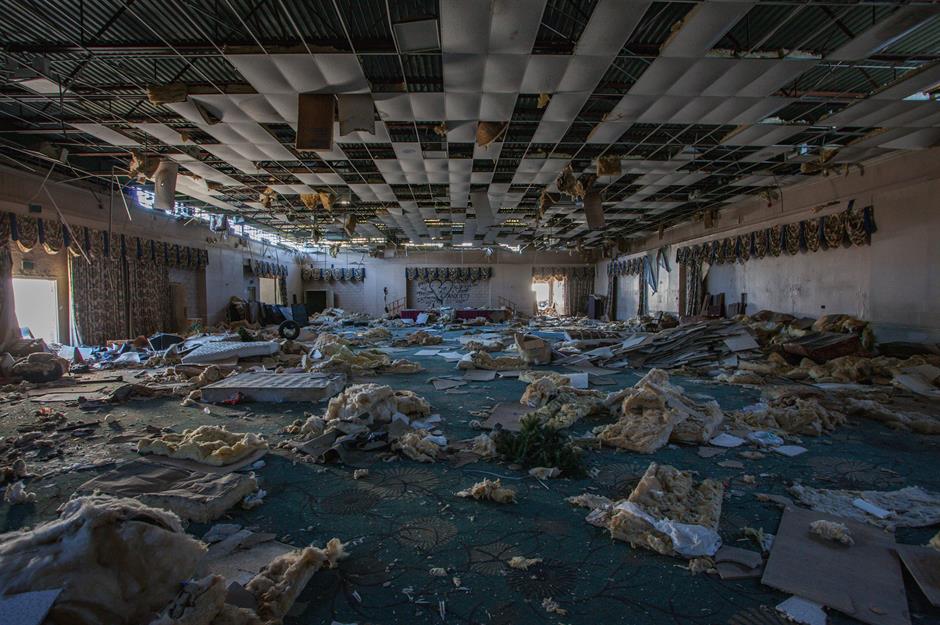
According to Leland, the list of celebrity guests is said to include actor Whoopi Goldberg, who checked in while filming the 1990 movie The Long Walk Home in Montgomery.
Sadly, the good times didn't last. The hotel began to look tired and some of the amenities that made it such a draw like the golf course were axed. Having gone down in the world, the hotel was rebranded as economy class.
The Governor's House Hotel: a shadow of its former self

The building did retain some of its wow-factor features, including the pool shaped like the state of Alabama. But it was a shadow of its former self by the late 1990s when competition from newly opened hotels downtown started to kill the business.
The Governor's House Hotel was reportedly put up for auction in the early 2010s. Since then, the building, which is now claimed by the State of Alabama through a tax lien, has been hit by numerous fires and now stands derelict.
Drakeford House
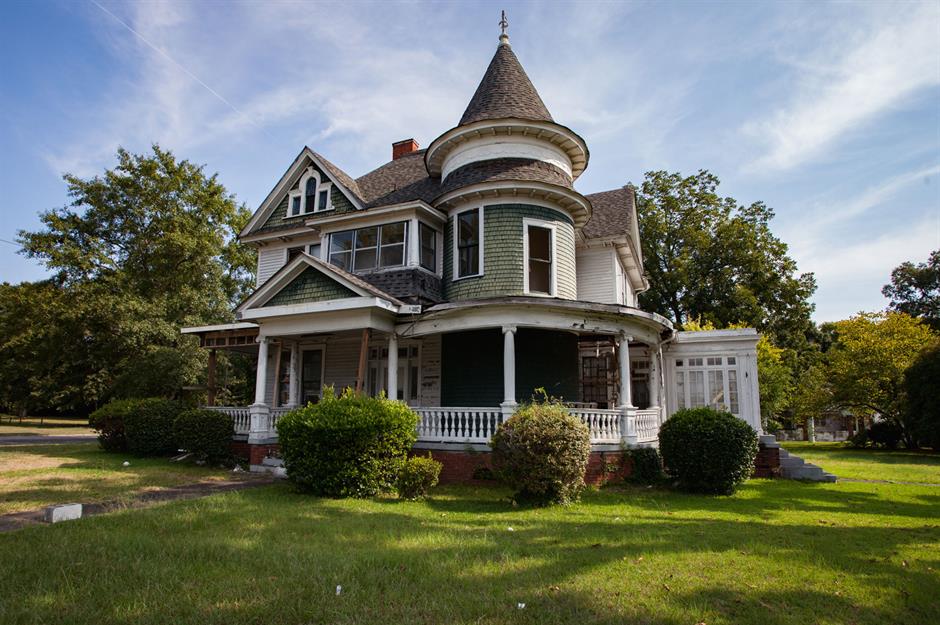
Dating back to the 1890s, this late Victorian stunner in Tuskegee is a mash-up of two architectural styles – Queen Anne and early Greek Revival.
Also known as the Drakeford House, it was built by John Drakeford, the founder and president of the City Bank of Tuskegee, who according to Kent, commissioned the mansion as a wedding gift for his wife.
Drakeford House: elegant architecture
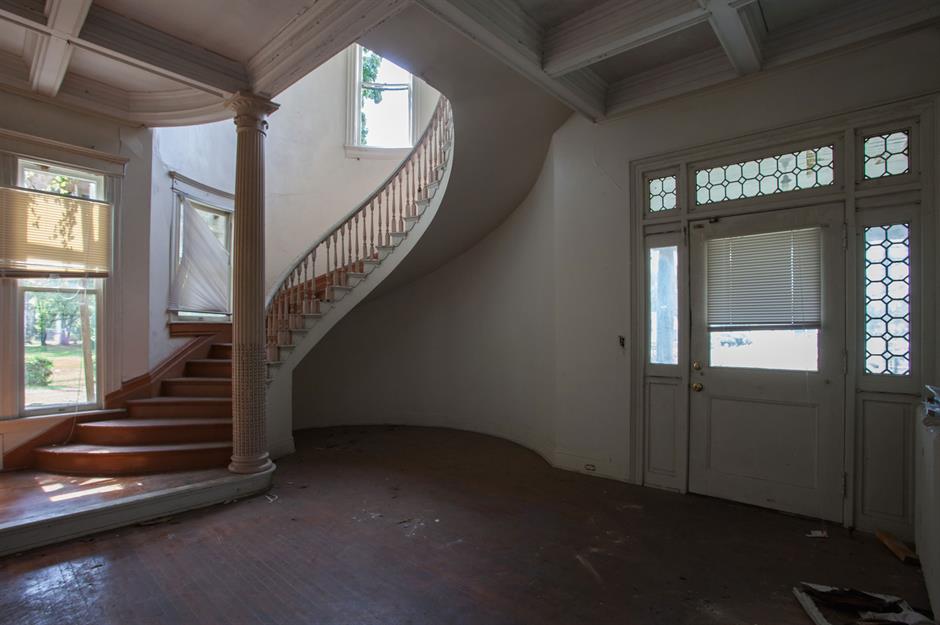
The house certainly has a fairytale feel with its whimsical turret and the wonderful sweeping staircase that graces the entrance hall.
Though it's devoid of decoration and isn't spotlessly clean, the space appears to be in decent condition with the walls and plasterwork intact, as well as the hardwood flooring.
Drakeford House: stunning heritage features
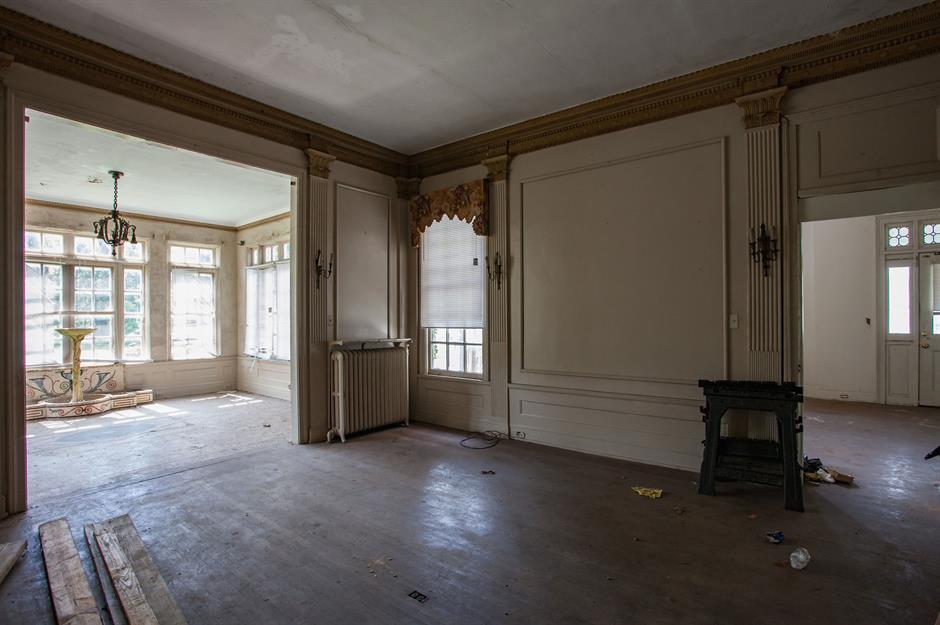
The parlour and solarium, a later addition to the property, are in good shape too.
These rooms are packed with gorgeous original features – the parlour is adorned with ornate Victorian cornices, pilasters and sconces, while the solarium is decorated with an eye-catching Art Nouveau fountain. This was one banker who wasn't miserly when it came to spending his money.
Drakeford House: left to languish
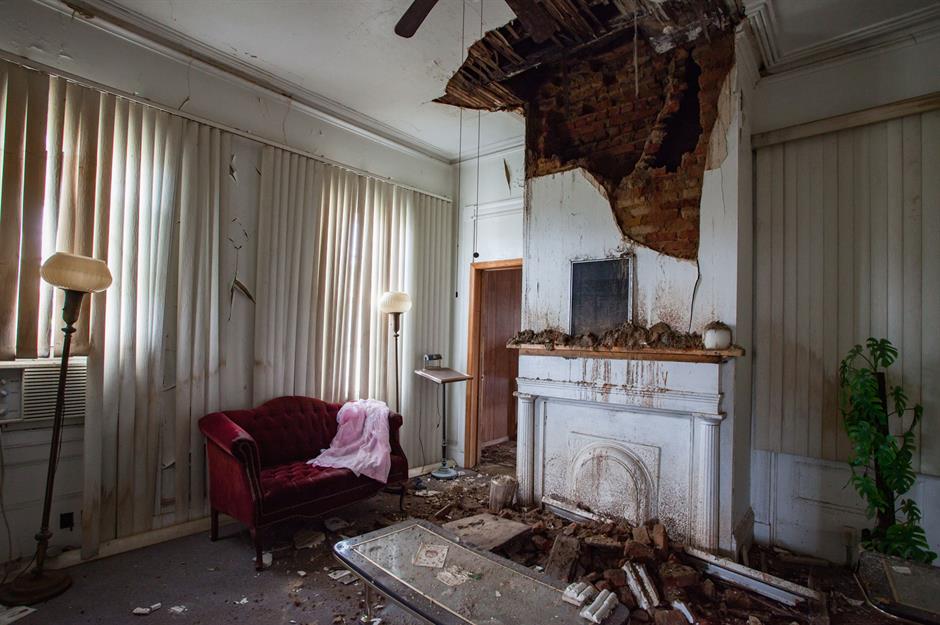
The cracks begin to show big-time though in the sitting room, which is missing a chunk of the wall and ceiling.
The property ended up with a Michigan-based doctor, who has left it vacant for longer than he'd probably care to remember. The physician, who was born in Tuskegee, approached the city's university in 2018 with an exciting proposal.
Drakeford House: thrown a lifeline
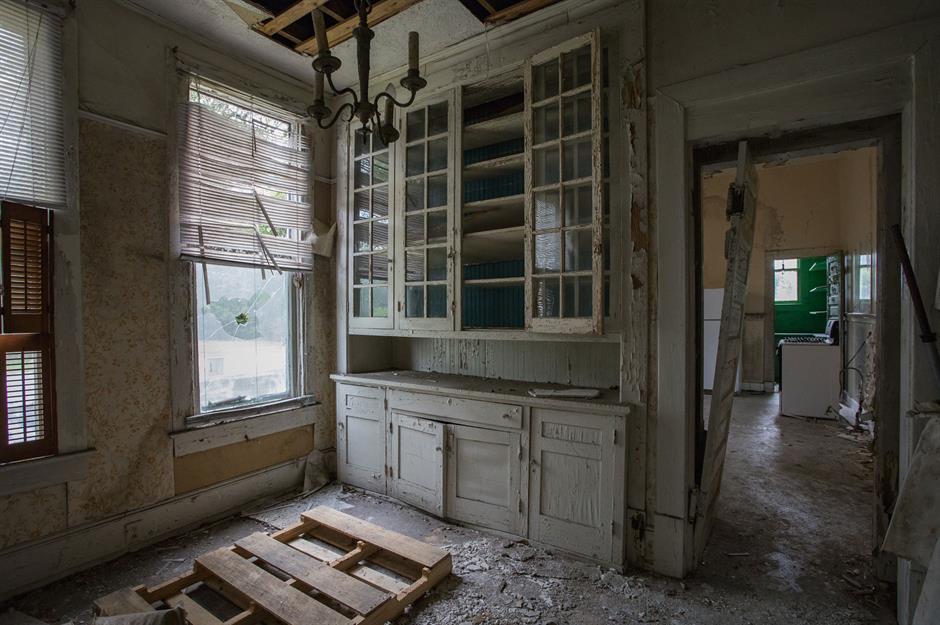
In exchange for restoring the house, the university could use it as a learning centre for historic preservation.
The university's School of Architecture and Construction Science has been working alongside the City of Tuskegee and several historic preservation organisations to restore the historic house.
The Toxic Laundromat
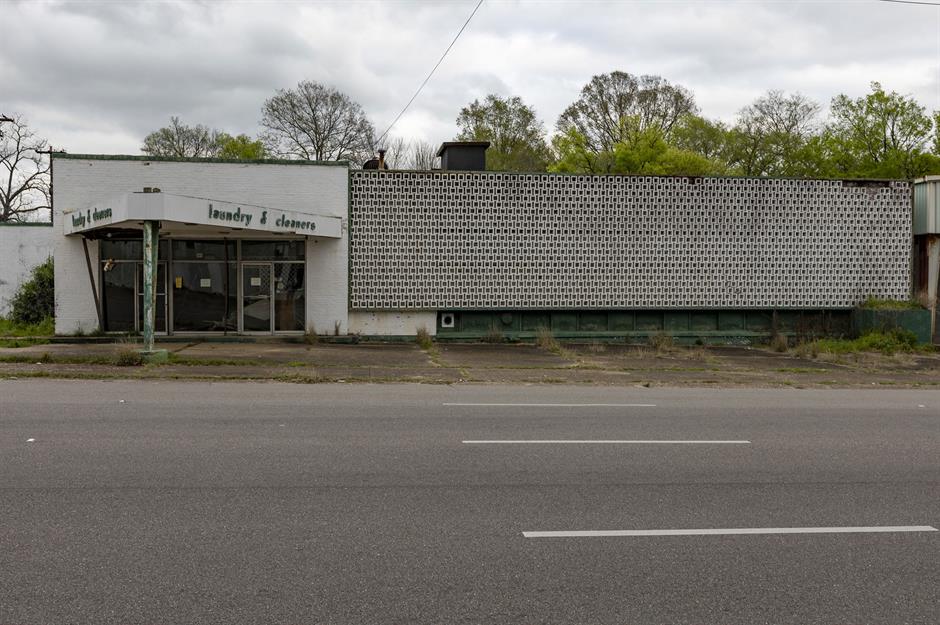
One of the more curious abandoned buildings Kent has encountered is Montgomery's Capital City Laundry.
Founded at the turn of the 20th century, the venerable business was given a snazzy makeover in 1959 and by 1970 the firm had 11 locations across Montgomery.
The Toxic Laundromat: deadly contamination
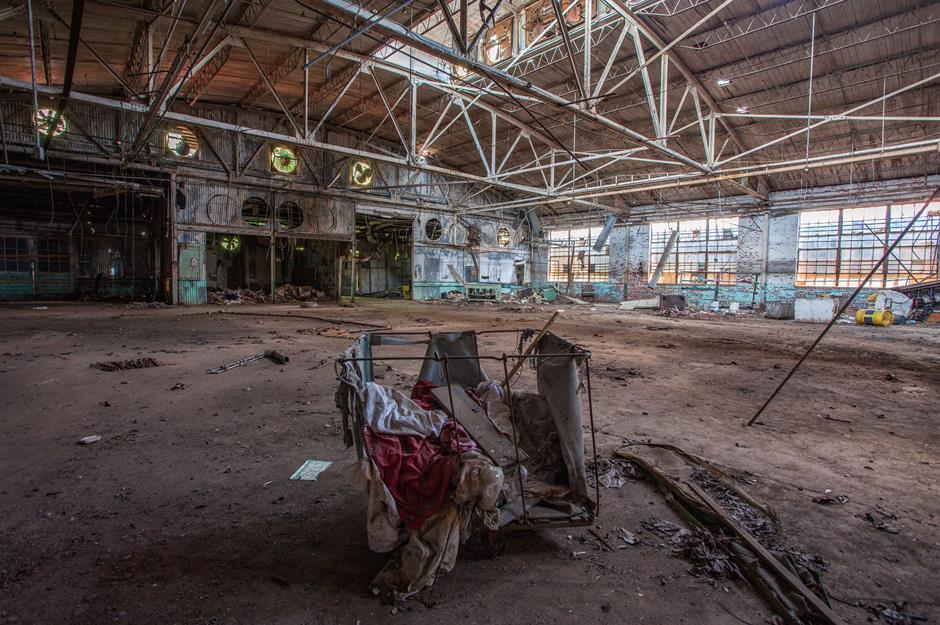
The supersized laundromat's downfall came in 1993 when construction crews working on a site nearby discovered that a staggering 50 blocks of downtown Montgomery were heavily contaminated with cancer-causing toxins, including the key component in dry cleaning fluid.
For obvious reasons, multiple laundries and gas stations in the area were reportedly identified as possible sources.
The Toxic Laundromat: frozen in time
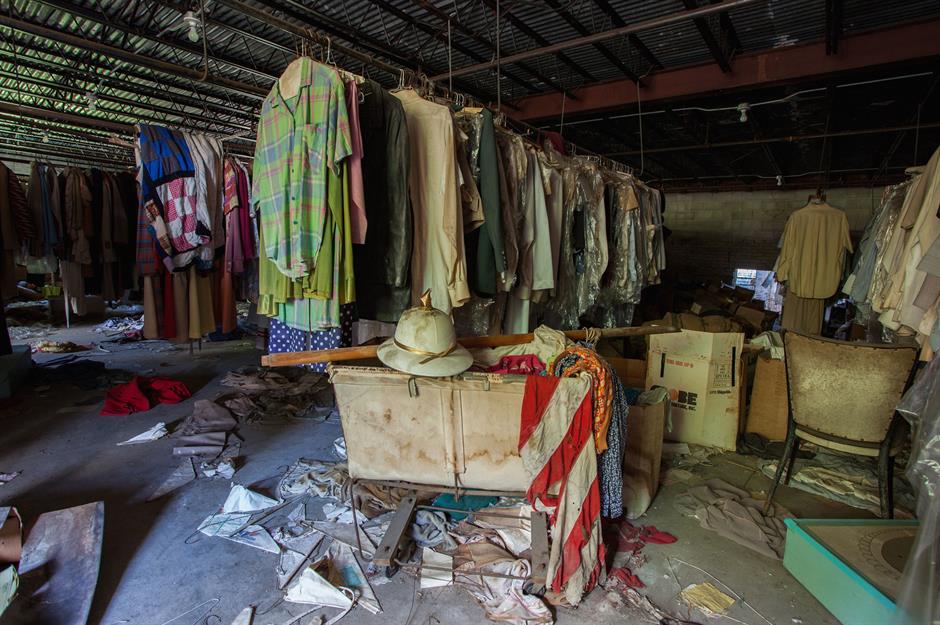
Along with other local businesses, the laundromat was forced to close down after almost a century in operation.
Since the clothing was presumably contaminated, it was left behind, and the time-warp building is now a sort of twisted museum of fashion from the 1990s and earlier – somewhere a vintage fan would have a field day if only the apparel wasn't so toxic.
The Toxic Laundromat: a snapshot of yesteryear
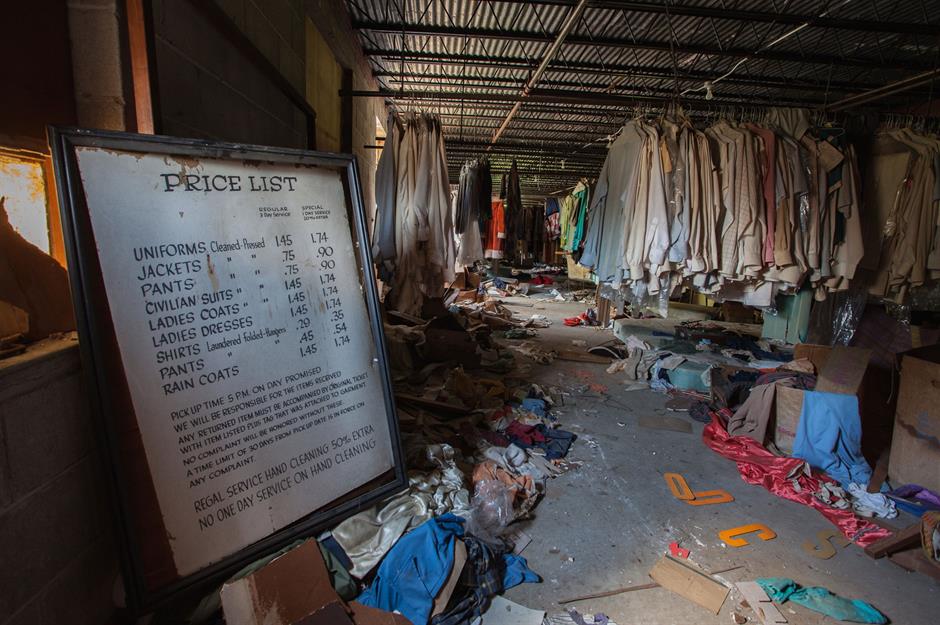
As well as the racks of clothes, a myriad of other insightful items remain frozen in time in the building. They include this decades-old price list from the era when it cost less than $2 (£1.55) to have a 'civilian' suit cleaned. How times have changed.
Following the shock discovery, clean-up teams from the Environmental Protection Agency descended on Montgomery, but there was no quick fix.
The Toxic Laundromat: headed for the wrecking ball
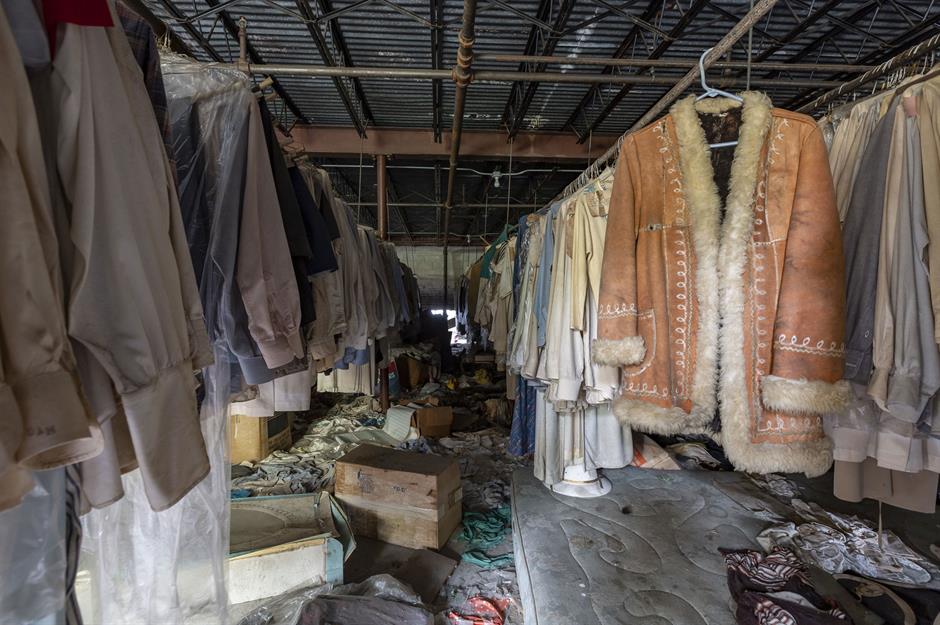
The decontamination process was a painfully slow one, but the formation of a public-private alliance in 2012 to oversee the project was instrumental in getting it done.
At long last in 2020, the 50-block area was no longer deemed a threat to public health and officially detoxified. It's now likely the abandoned laundromat will be demolished someday to make way for a shiny new development.
The House Of Rock
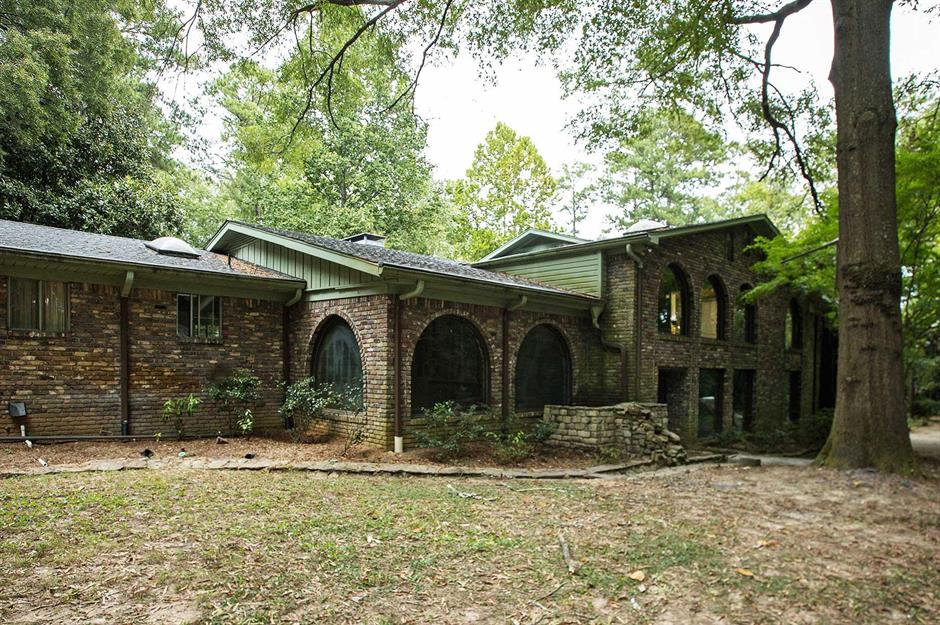
Located in Birmingham, this ranch-style Bessemer brick home was built in 1963 for steel magnate Norris Underwood and his wife Mildred.
A time capsule of the era, the quirky house is packed with kitsch mid-century touches and plenty of jaw-dropping surprises that make it a real one-of-a-kind property.
The House Of Rock: a decadent dream home
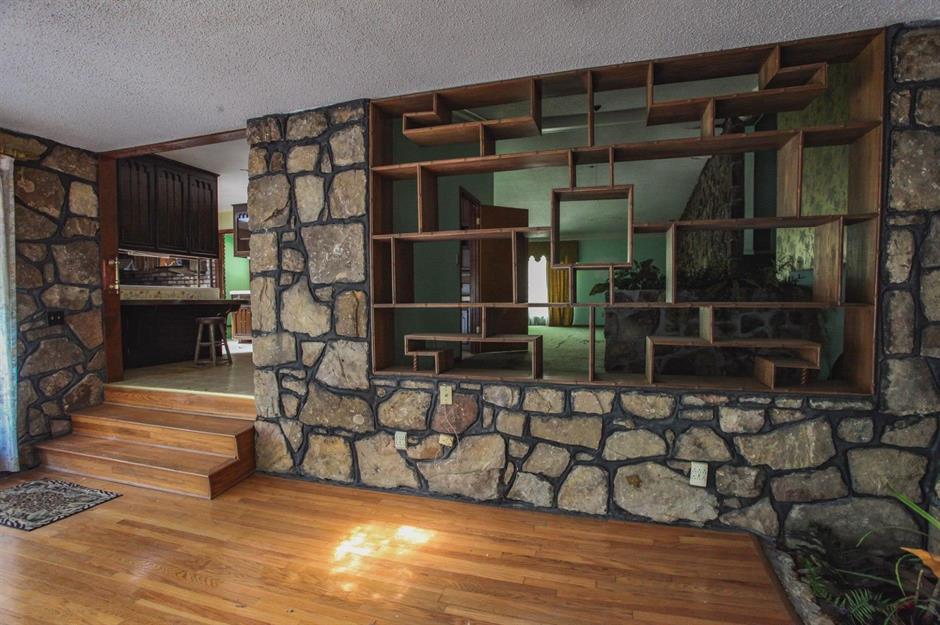
The couple went all out creating their dream home, splurging on all manner of custom features such as this Art Deco shelving unit and stone surround, which doubles up as a room divider.
To the left of the shot, you can just about make out the bespoke kitchen with its old-fashioned dark wood units.
The House Of Rock: unusual design features
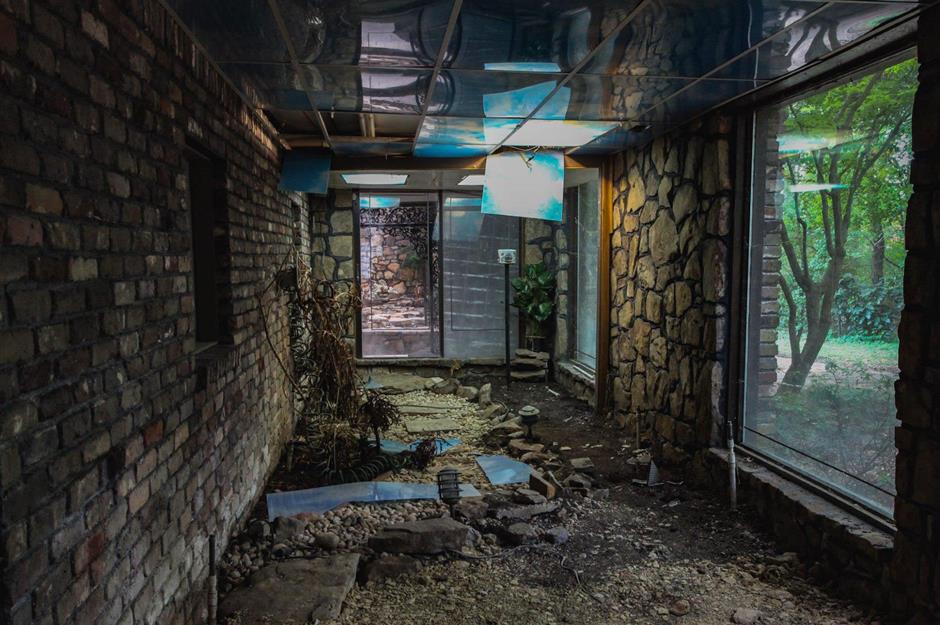
There's also a very louche chillout room with a bathtub, which is fetchingly covered in the same gaudy green carpet that covers the floor. Other bizarre features include the aviary.
The Underwoods had the enclosure built to house their many pet birds. But it's not the home's biggest surprise by a long shot.
The House Of Rock: resort-style swimming pool
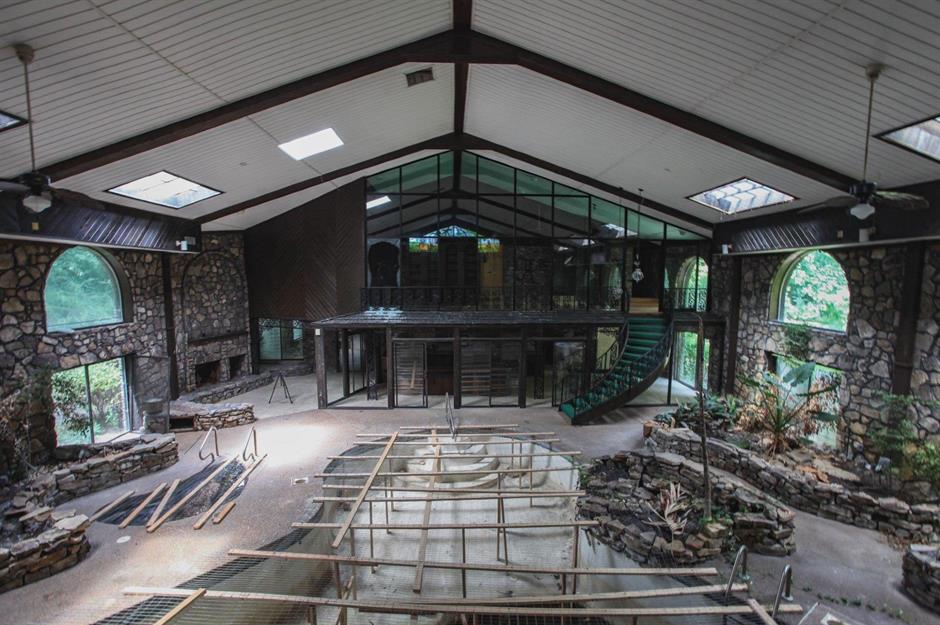
Among the home's most unexpected features is the gigantic vaulted pool area, which was built in the 1970s.
A Playboy Mansion-esque indoor tropical paradise, the cavernous space is peppered with fake exotic plants that surround a huge indoor pool complete with a stone waterfall, dinky plunge pool and grotto shower. And the surprises don't stop there.
The House Of Rock: sprawling zen gardens
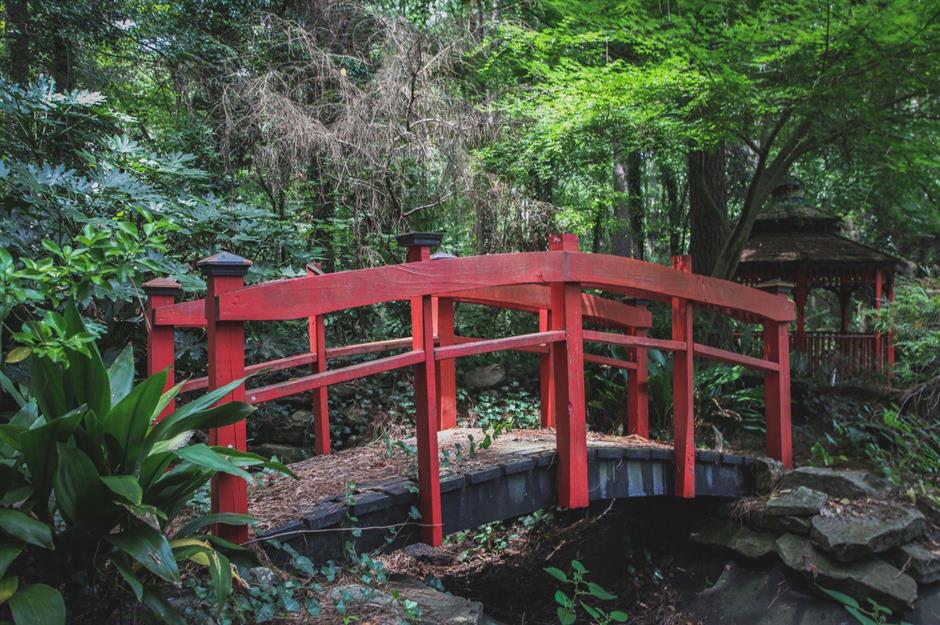
As well as a secret passageway, the property hides three acres of exquisite Japanese-style gardens.
Norris Underwood died in 2006 and his wife passed away six years later. Their daughter inherited the house but left it vacant as she struggled to find a buyer. After falling into foreclosure, the house finally sold in April 2020 for $255,000 (£198k) to a buyer keen to renovate it. Here's hoping this unusual house got the TLC it deserved.
Loved this? Now discover more incredible abandoned homes
Comments
Be the first to comment
Do you want to comment on this article? You need to be signed in for this feature